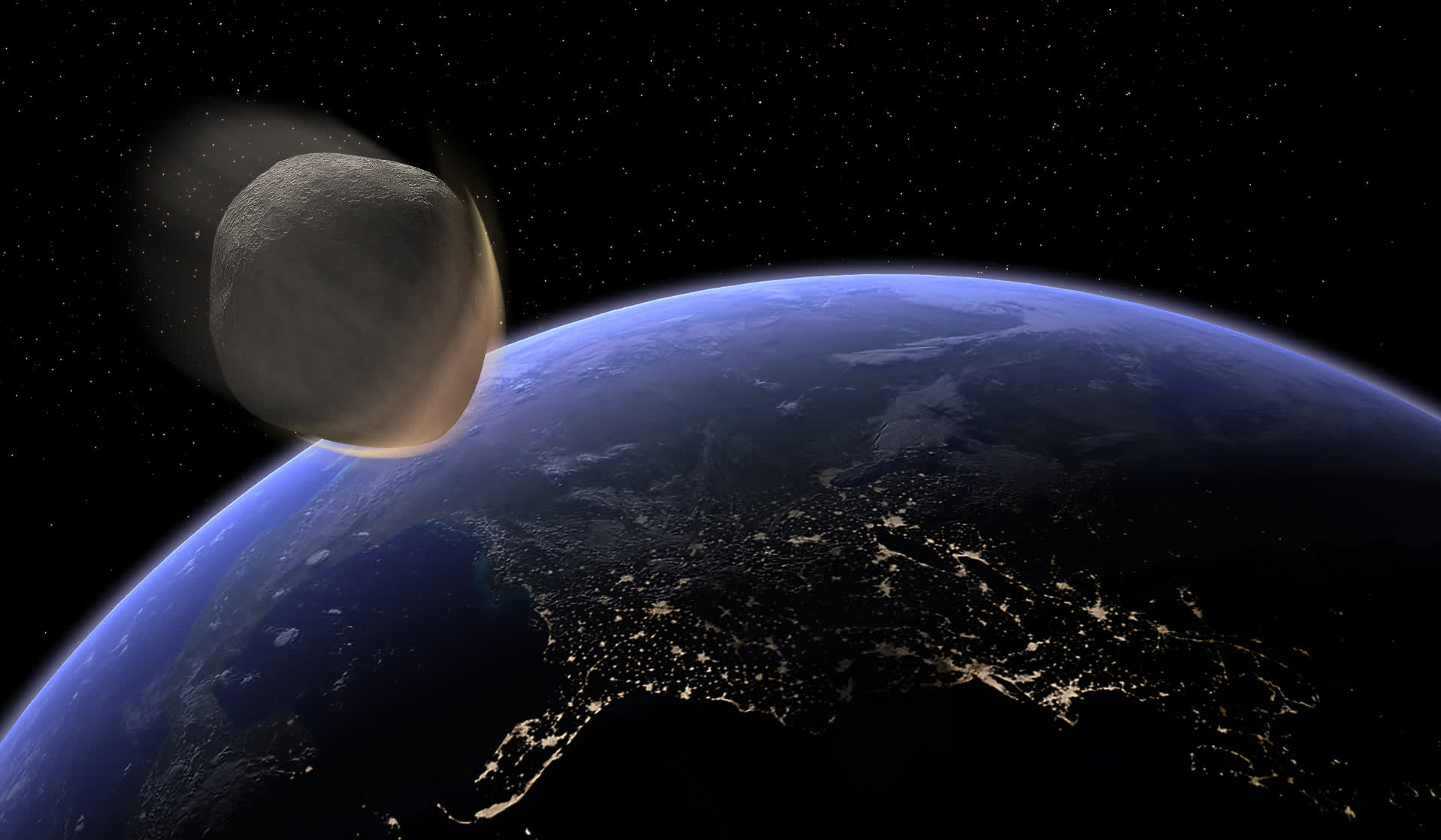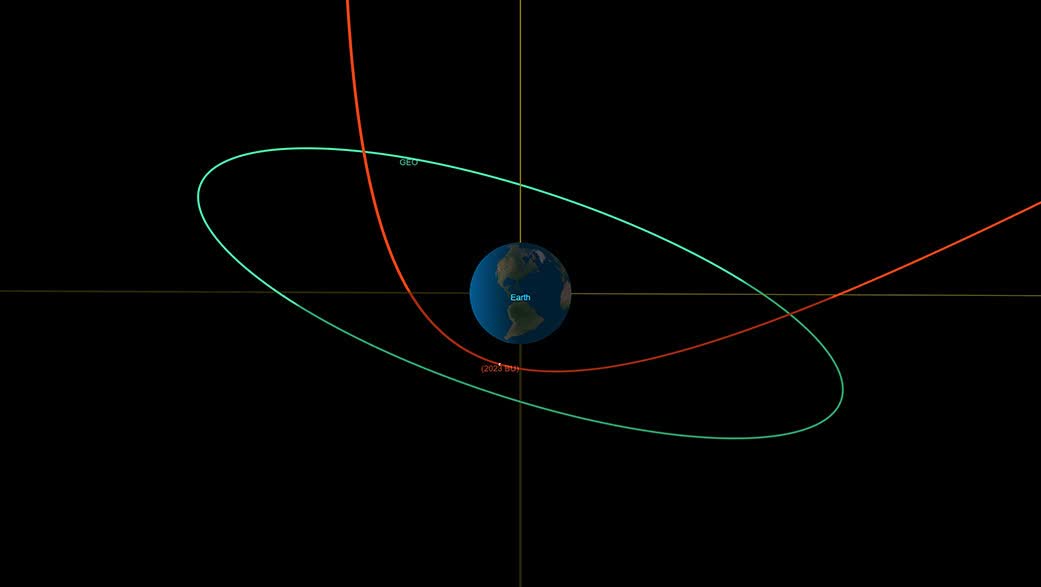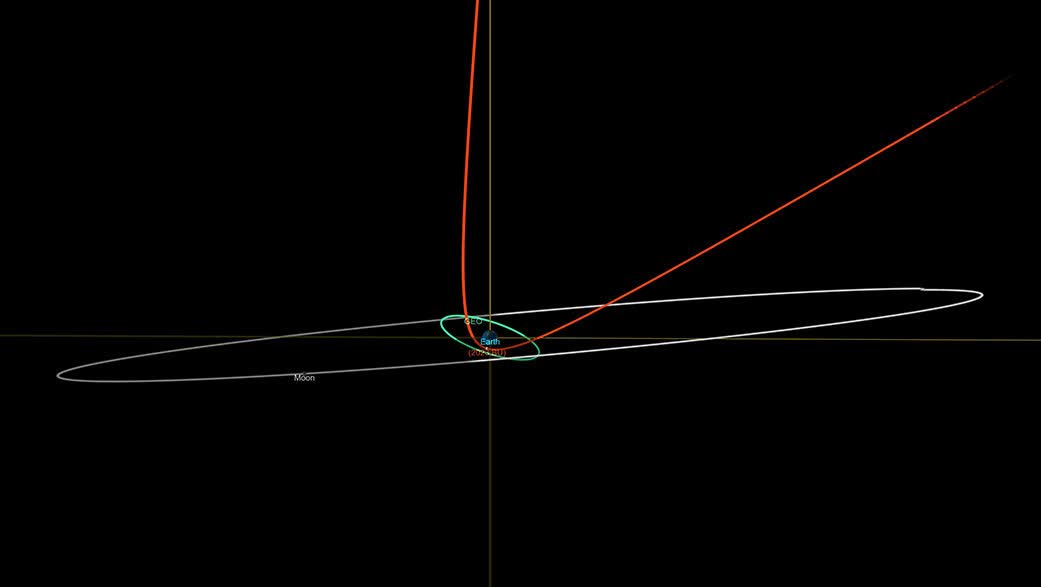That was close! An asteroid approximately the size of a large SUV or bigger swung around the Earth Thursday evening missing us by just over 2,000 miles. NASA said that it was one of the closest flybys of a near-Earth object in recorded history.
On Thursday, an asteroid passed by Earth in what NASA says is "one of the closest approaches by a near-Earth object ever recorded." The space rock known as "Asteroid 2023 BU" flew over the tip of South America on January 26 at 7:27 EST. According to the US space organization, the object passed only 2,200 miles from Earth's surface. That distance is 10 times closer than the altitude of geosynchronous satellites, which are about 22,000 miles away.
Astronomers estimate Asteroid 2023 BU to be about 3.5 to 8.5 meters wide. While the flyby was closer than anyone has seen since we started looking at these things, NASA says it was never a direct threat to Earth. Had it been on a collision course, its size would have seen it turn into a blazing fireball that would have mostly disintegrated before touching the ground --- a fantastic light show, but not very dangerous.
"This small asteroid would [have turned] into a fireball and largely [disintegrated] harmlessly in the atmosphere, with some of the bigger debris potentially falling as small meteorites," NASA said.
The asteroid is a relatively new object, only discovered as it approached last Saturday, hence the 2023 BU designation. It was spotted by Gennadiy Borisov from a Crimean observatory, with astronomers worldwide also spotting it.
The Scout impact hazard assessment system at NASA's Jet Propulsion Laboratory (JPL) quickly calculated the asteroid's orbit using the limited data from the observatories. Scout determined it would miss Earth, slingshotting around the planet, and hurtle back into deep space.
"Scout quickly ruled out 2023 BU as an impactor, but despite the very few observations, it was nonetheless able to predict that the asteroid would make an extraordinarily close approach with Earth," said Scout developer and JPL engineer Davide Farnocchia. "In fact, this is one of the closest approaches by a known near-Earth object ever recorded."
The asteroid passed so close that NASA expects its regular orbit around the Sun to be permanently altered. Before the close encounter, the object's course around the Sol was approximately circular, with a 359-day year. Now its orbit will be elliptical, moving about halfway between the solar paths of Earth and Mars. Because of this shift, it will now take the asteroid 425 days to orbit the Sun.
Although Asteroid 2023 BU posed no real threat, its near miss reminds us that we are not alone in the solar system. Larger objects could potentially end life on Earth in a catastrophic collision.
Astrophysicists and scientists at NASA are vigilant and aware of this danger, which is why the space agency has been developing a system to nudge larger space rocks away from a collision course by smashing a spacecraft into them.
Last year, the DART (Double Asteroid Redirection Test) successfully slowed a non-threatening asteroid's 160-meter "moonlet" by 32 minutes. The impact proved enough to knock large rocks off a collision course with Earth. The space agency said slowing the orbit by anything more than 73 seconds would have been a success.
Masthead credit: Kevin Gill


